
Tour De Fleece 2025
Hello friends,
The month of July is known to yarn spinners all over the world as Tour De Fleece month, where spinners who want to join in, prepare their spinning supplies and spinning wheels for spinning along beside the Tour De France. On the days that the cyclists spin their wheels, so do Tour De Fleece spinners. It's an online spin-along, and spinners from all over the world often share their spinning on social media platforms like Instagram, YouTube, and Ravelry, during the 21 days of the Tour De France.
You don't need to officially sign up to anything, or pay any money, or join a team (though some people do), just spin when you can during the Tour De Fleece and make whatever yarn that appeals to you. My goal this year was just to spin every day of the Tour De Fleece, using whatever roving and fleece I had in stash, using both my drop spindle and spinning wheel.
The first project I spun up was a 100 gram roving of Union Fibre's fine Haunui breed sheep in shades of pink, purple, yellow, green, brown and teal.
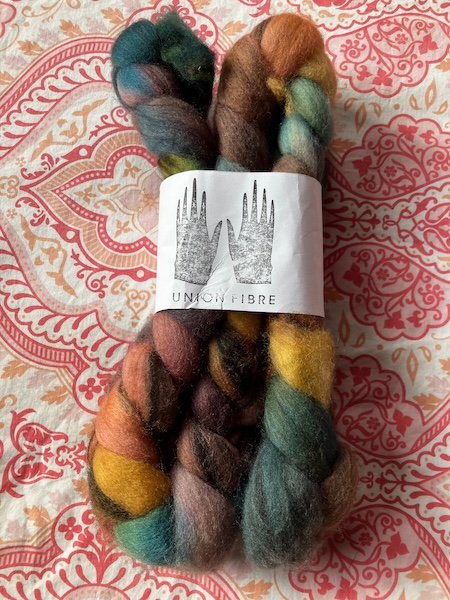
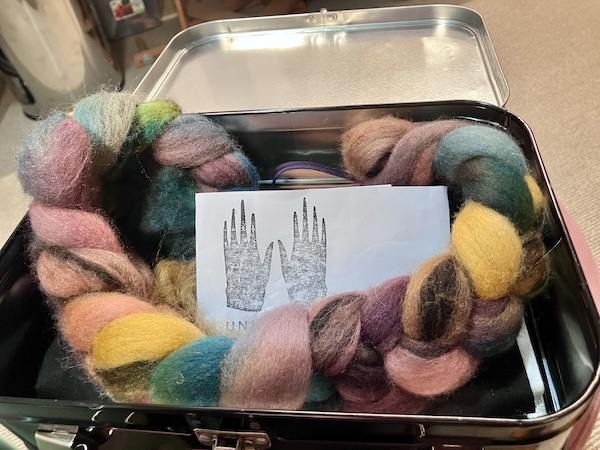
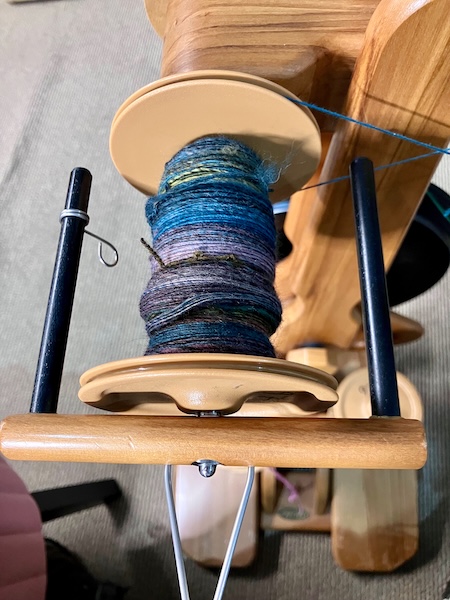
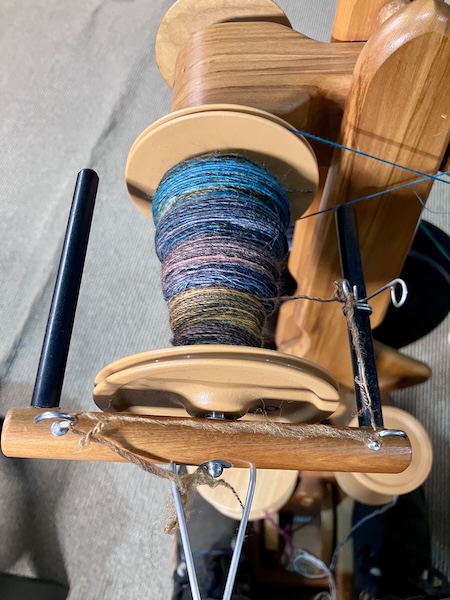
I spun up the singles on my Majacraft Suzie Pro on two bobbins, with the intention to make a 2 ply yarn. The plied yarn was so pretty, coming out at an approximately fingering weight/4 ply yarn with a total of 237 m of yarn. I don't have any plans for this yarn yet, so it'll just go into storage along with all my other spun yarn.
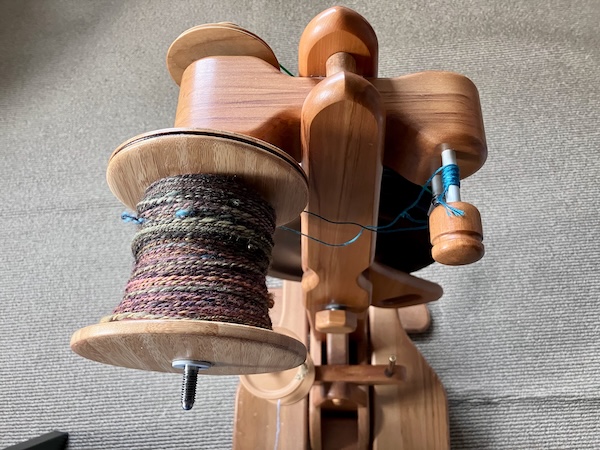
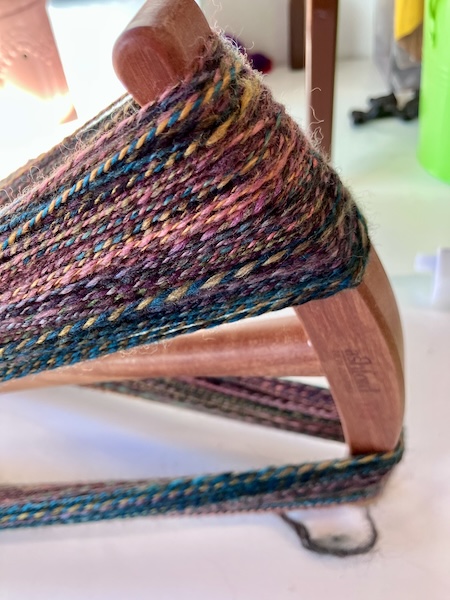
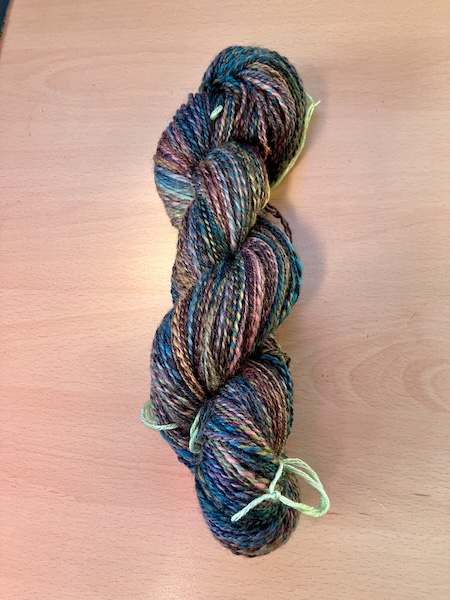
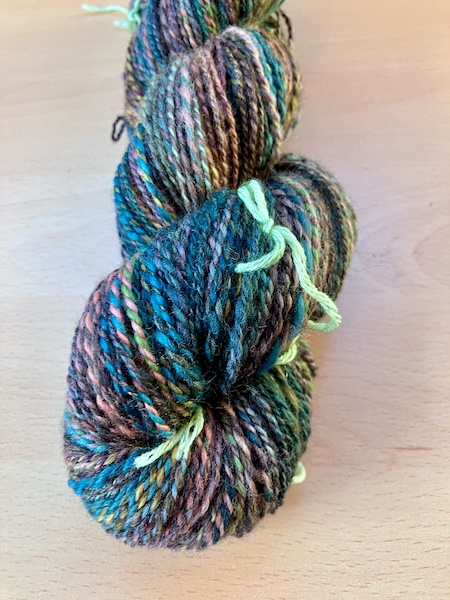
Next up to spin was 200 grams of Ashford 80% Merino/20% Mulberry Silk roving in the colourway Gelato. I just love to periodically spin up some of Ashford's beautiful colourways for fun, with the intention to use the spun yarn for handwoven and handspun scarves for my Felt store Hearth and Oak.
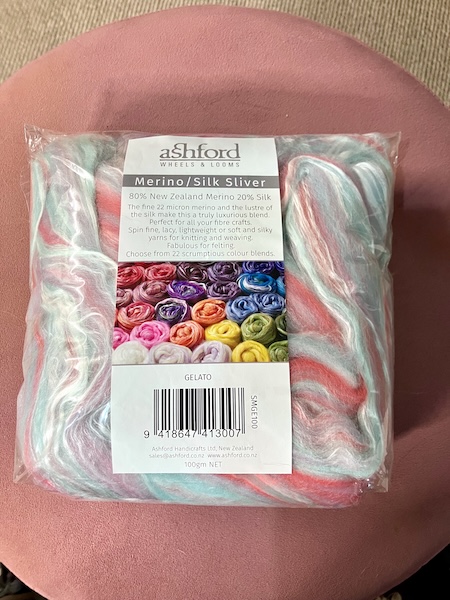
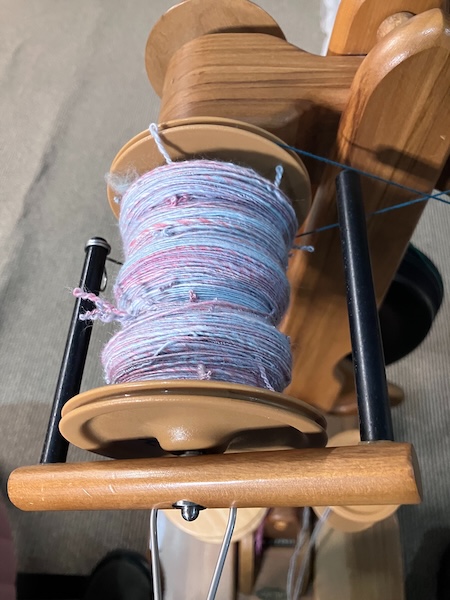
Once the two single bobbins were spun, it was time to ply them 2-ply style. The resulting yarn was approximately fingering weight/4 ply and had a length of 423 m.
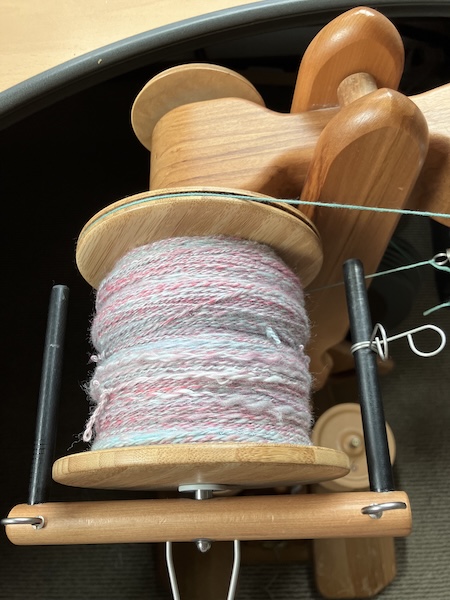
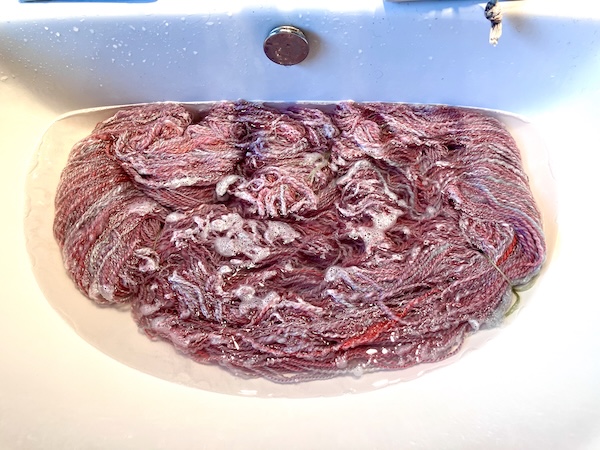
After a quick warm soak to set the twist in the yarn, my gelato yarn was all finished and ready for weaving.
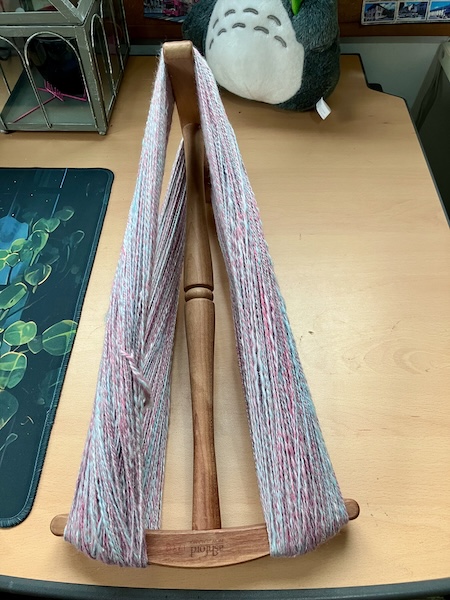

I just love the shades of blue, pink and white, and I think it'll make a pretty nice scarf when it's all woven up.
I just loved making so much time for spinning in July, it's such a cold month and it's really cozy to spin on my spinning wheel on freezing winter nights. I already look forward to next Tour De Fleece next year.
Have a wonderful day
Julie-Ann
Want to discuss my post? Feel free to chat with me on Instagram or Mastodon or Bluesky.
Random Farm's Tilda and Biscuit Fleece Project - Washing and Storing
Hello friends,
Yes, I went and bought two more raw fleeces, but in my defense, it was only 500 grams of fleece each. I saw a social media post from Random Farm in April announcing the release of their raw fleeces after they'd been taken to the 2025 National Black and Coloured Sheep Breeders Association Competition. After searching through the photos of their fleeces available, I was really tempted by two raw fleeces, from the sheep Tilda and Biscuit, so I bought 500 grams of each of them.
First up we have Tilda the sheep, who is a silver grey pure-bred Romney, with fleece of 34 microns across and a staple length of 13 cm. Her fleece came second in the Strong Handcraft Fleece section at the National Black and Coloured Sheep Breeders Association Competition in 2025.
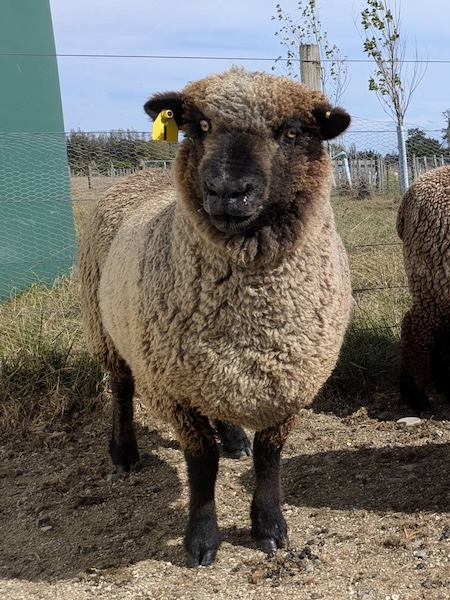
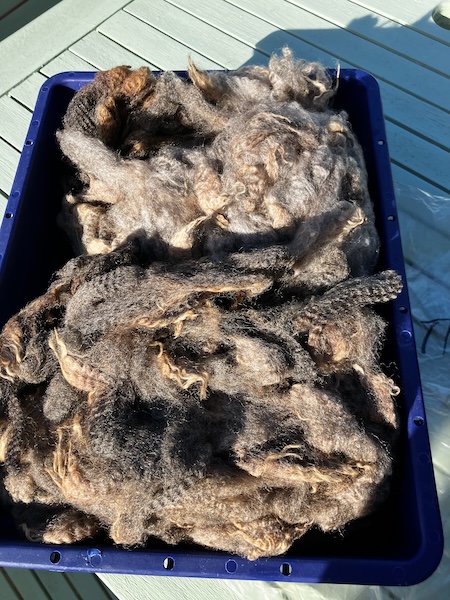
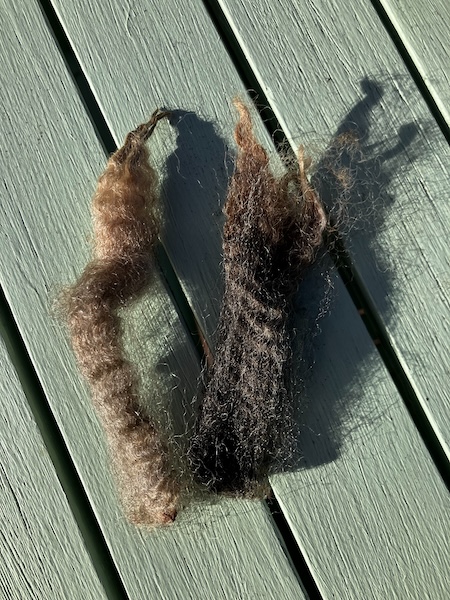
With her fleece I scoured it using my previous method of scouring wool using Unicorn Scour Power, but this time I used a new drying method.
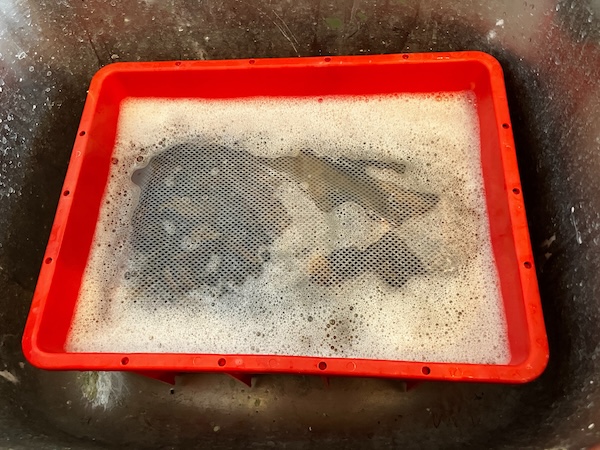
Usually I put scoured fleeces into plastic trays to dry while outside, but I have the problem of fleece trying to blow away in high winds, and also when I bring it inside Missy and Rosie cats think of them as warm and fluffy cat beds. I saw a social media post a while ago of someone using a foldable fish drying mesh rack to dry fleeces and yarn, so I was interested in buying one, and I eventually found it on Temu after I couldn't find any for sale locally in New Zealand. I opted for the four tier rack with zip closures as it gave me many options for drying fleece, fibre, and yarn. It also folds down into a very small space for storage.
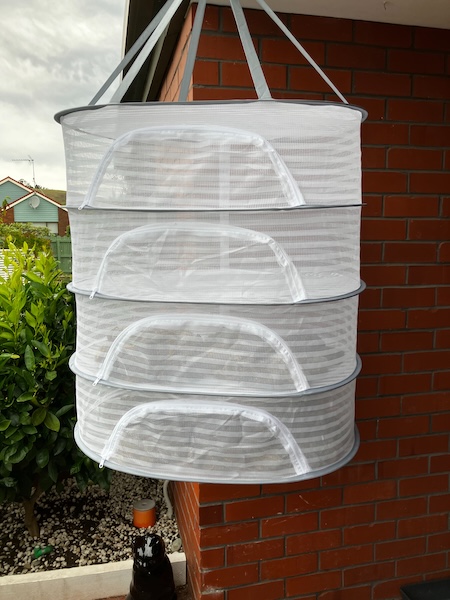
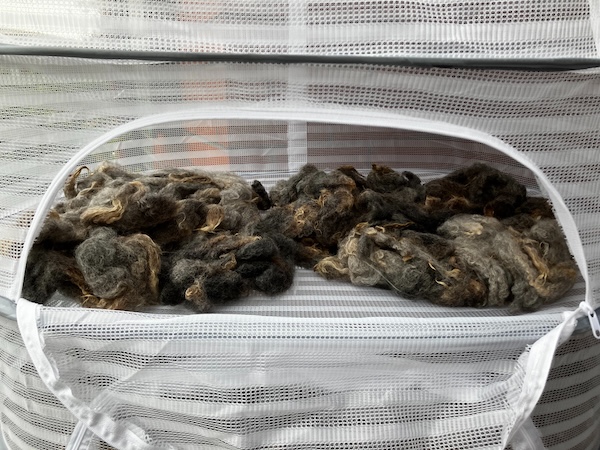
And the new system works great for both outside the house, and also for hanging inside near the fireplace on cold nights. It didn't take very long at all to dry, hung up safe from both winds and cats. A quick flick carding of Tilda's dried fleece shows a nice clean and long staple with great crimp in the fleece.


Biscuit the sheep is a silvery-grey romney/corriedale fleece, with romney lustre and corriedale softness. Her fleece was shorn when she was 18 months old, so this is her two-tooth fleece, at 31 microns and a staple length of 14 cm. Biscuit's fleece came 4th in the Mature Strong Handcraft Fleece section at the National Black and Coloured Sheep Breeders Association Competition in 2025.
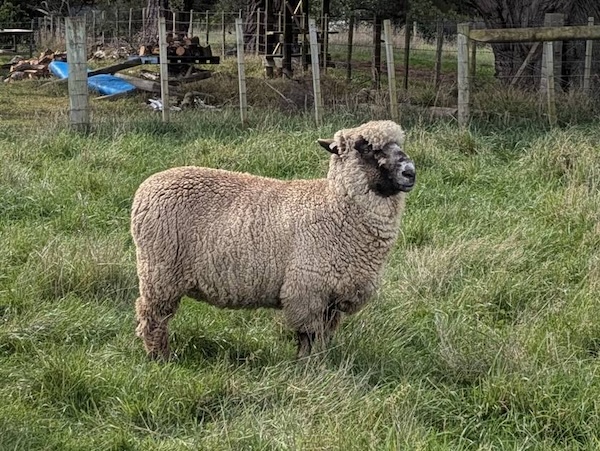
Random Farm suggests spinning this fleece semi-worsted/worsted style, which require wool combs to align all the fleece in the same direction. I have actually have a set of wool combs ordered from Majacraft, but I'm waiting for them to arrive so I can try this method of fleece preparation.
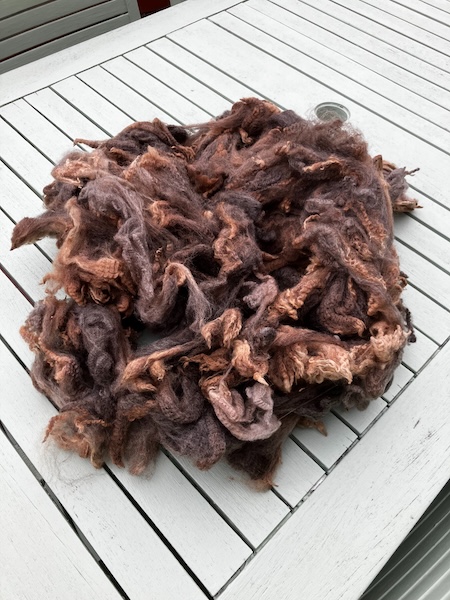
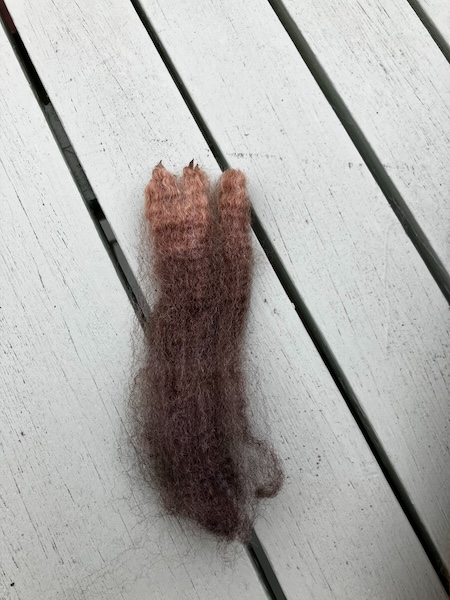
When dried I flick carded a lock of Biscuit's scoured and washed fleece, and it turned out just beautiful, with two toned colours on a long staple. I'm looking forward to using my new wool combs with this fleece when they arrive.

With four scoured and clean fleeces now in storage, I will not buying any more fleece for quite a while. The next step for all these fleeces is to process them for spinning, by either drum carding them, or using my wool combs.
And I just wanted to say a big thank you to Random Farm, who gave me permission to use their photos of Tilda and Biscuit the sheep in this blog post. Please check out Random Farm's Facebook and Felt pages to see all their lovely fleece available.
There won't be a blog post next Thursday, as I'm having cataract surgery on my left eye next Wednesday. I am planning on posting a blog a week after that if all goes to plan.
Have a wonderful day.
Julie-Ann
Want to discuss my post? Feel free to chat with me on Instagram or Mastodon or Bluesky.
The Artsy Housewife's Abalonia's Apple Tree Cross Stitch Finish
Hello friends,
I have a new cross stitch project finish to show you today, with The Artsy Housewife's Abalonia's Apple Tree cross stitch project being completed in early this May.
It was only a little while ago that I posted this in a blog as a new project I was working on over the autumn. In the next few weeks after that, I monogamously worked on this cross stitch project until it was finished. I am currently having eye sight problems (which will soon be fixed with cataract surgeries in the next few months), and the Aida in this project was the only one of my current WIPs big enough for me to see easily while cross stitching.
And now that Abalonia's Apple Tree is now finished, I am so very pleased with the results. This cross stitch project finish shows off everything good about the autumn season with shades of red, orange, green, and yellow, and I just love the big and small details of the pattern.
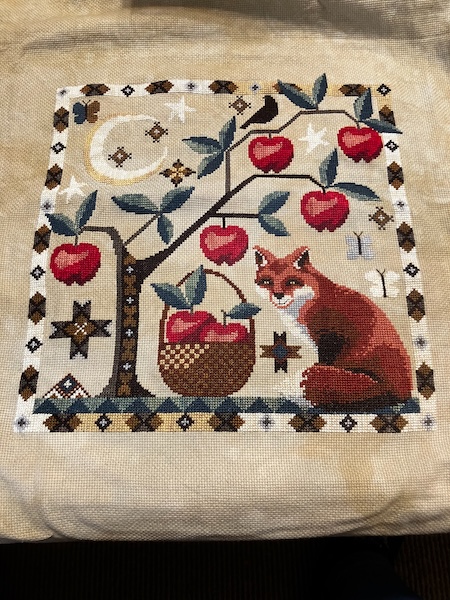
The cresent moon and stars are just so beautiful.
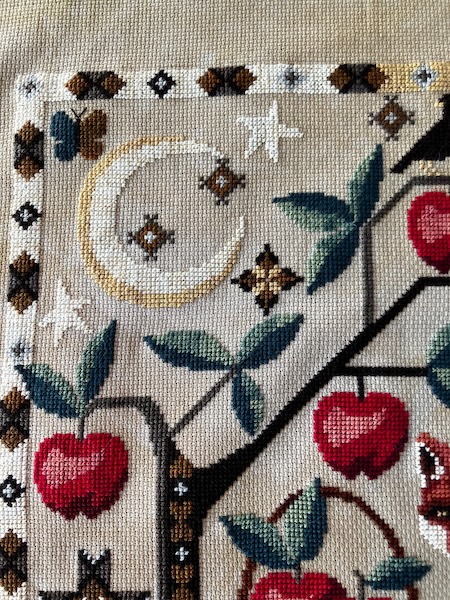
And so are the blackbird and the ripe red apples.
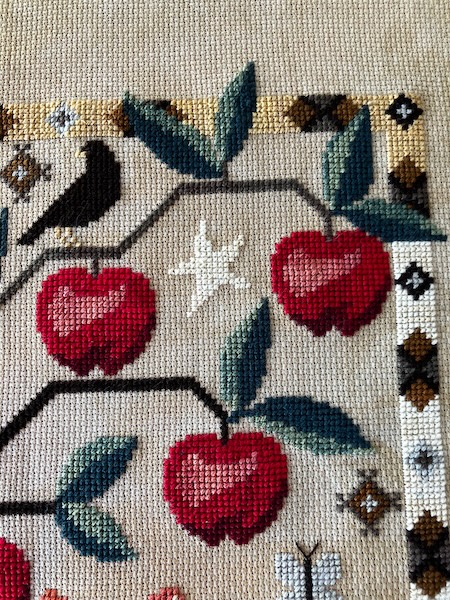
Abalonia, the fox, is so nicely detailed in shades of browns, reds, and creams.
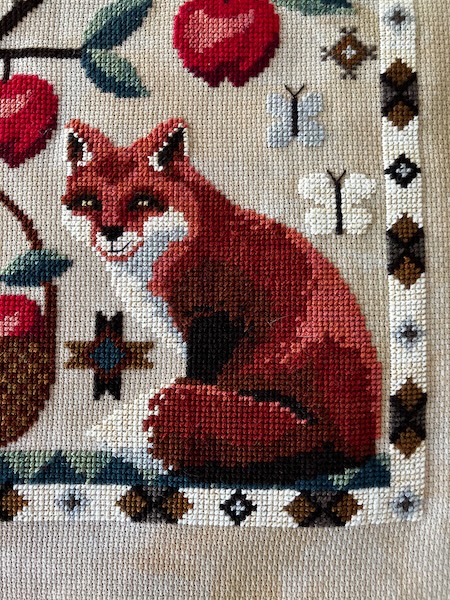
The wicker basket has wonderful shades of brown and cream, and it really stands out against the Fiber on a Whim Old Gold 18 count Aida.
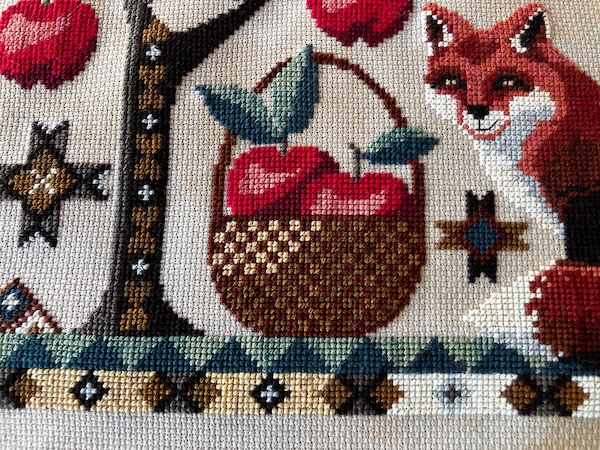
I am very happy with this project, and all that remains now is to find a perfect frame to house it in. I hope to get that done in the next couple of weeks.
Have a wonderful day
Julie-Ann
Want to discuss my post? Feel free to chat with me on Instagram or Mastodon or Bluesky.
Frederick the Literate Cross Stitch Project
Hello friends,
I recently began a new cross stitch project, Frederick the Literate, by Dimensions. This cross stitch kit has been a unicorn project of mine for years, but until recently I haven't been able to get hold of a copy of my own. When I usually try to track it down, it's always out of stock in New Zealand.
Luckily one of my sister's found it available on Spotlight's website, and it was on special, so I bought it immediately before it sold out. After waiting for what felt like forever, and dealing with courier issues (who nearly lost it), I cracked the kit open and got started.

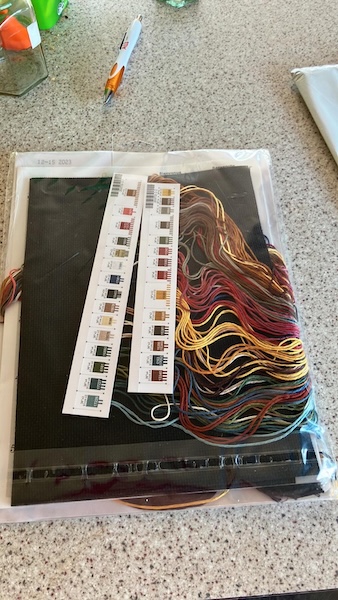
The kit contains two of my favorite things, cats and books, so I was especially excited to start stitching, even though the background aida was black in colour...
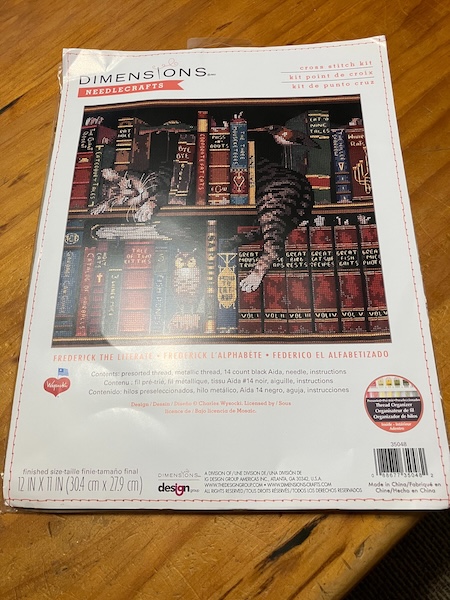
As typical with Dimensions kits, the thread was on cards, so I used a hole punch to make space for threads in progress. And since Dimensions often use combined threads, I had to come up with a plan to deal with these mixed threads as well.

And this is my progress with Frederick the Literate cross stitch project so far. The books on the top row, in the middle, are in progress. I never do any back stitching on a project until the end, so right now the books are looking pretty blocky. It won't be too long though before I start cross stitching the cat, which I'm excited about.
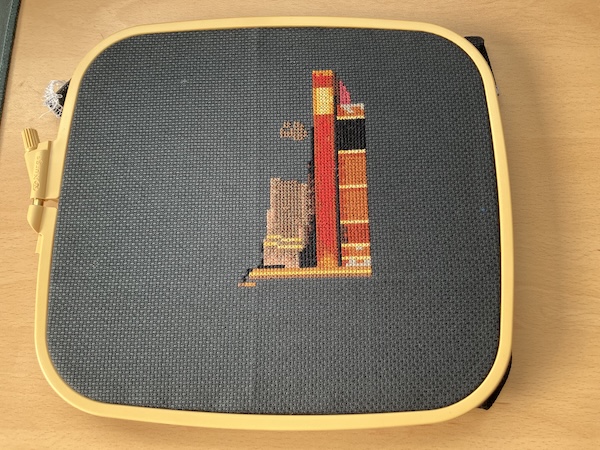
Luckily this cross stitch project isn't too big, so it won't take too long to complete over the coming months of autumn and winter.
Have a wonderful day
Julie-Ann
Want to discuss my post? Feel free to chat with me on Instagram or Mastodon or Bluesky.




